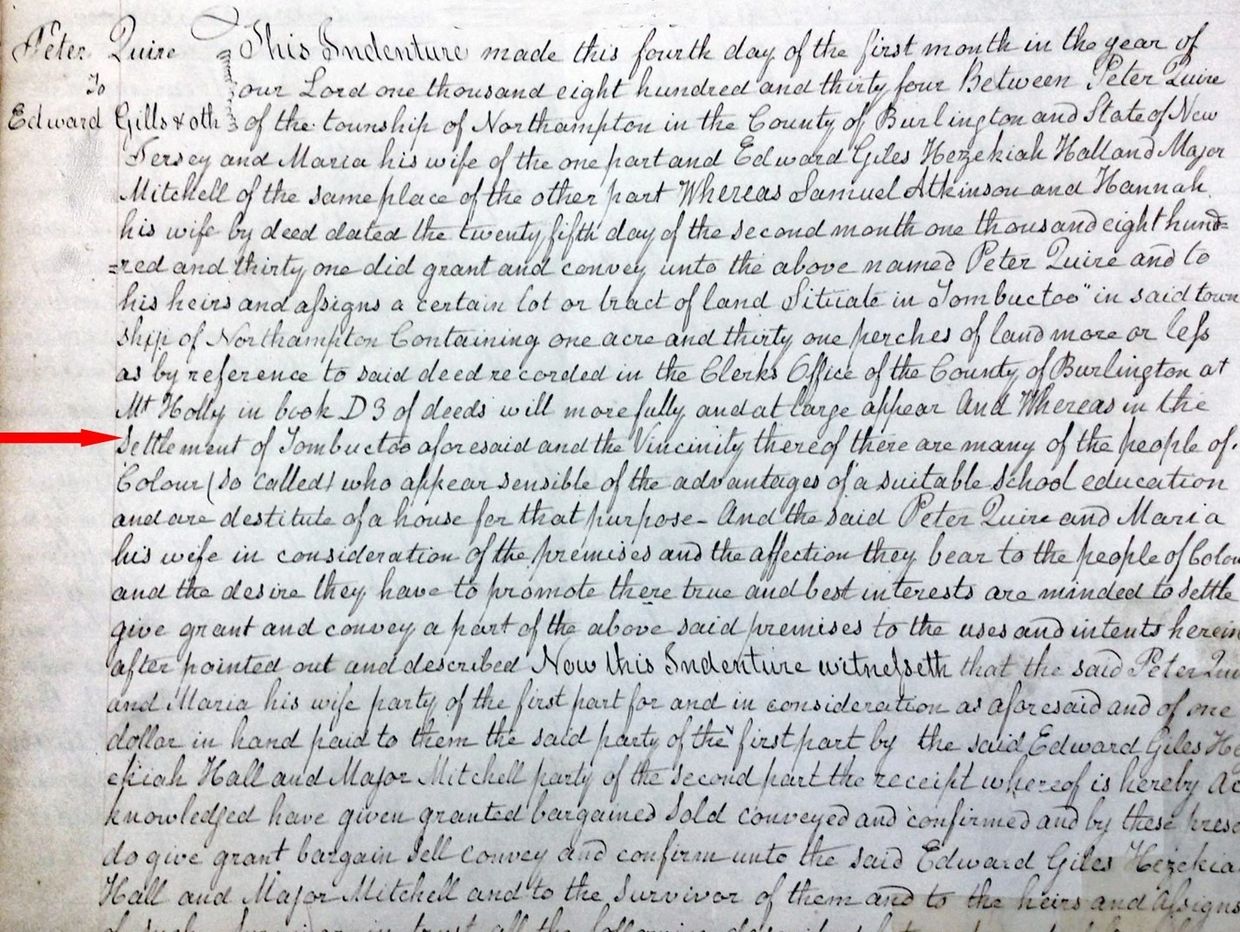Scroll down for TV and newspaper clips
African Union School

Source: Burlington County, NJ, Deeds, G3:389, Peter Quire to Edward Giles, et al, (January 4, 1834) Burlington County Clerk’s Office, Mount Holly
The deed for the purchase of a parcel to build the African Union School in Timbuctoo in 1834 is intriguing . In addition to the requisite indications of the sellers, buyers, price, and legal description of the premises, it says:
“Whereas, in the Settlement of Tombuctoo…and in the vicinity thereof, there are many People of Colour (so called), who seem sensible of the advantages of a suitable school education and are destitute for a house for that purpose. And the said Peter Quire, and Maria, his wife in consideration of the premises, and the affection they bear to the People of Colour, and the desire they have, to promote their true and best interests, are minded to settle, give, grant and convey…said premises to the uses and intents hereinafter pointed out and described.”
This deed also stipulated that future board members had to be “People of Color” who lived within 10 miles of the premises. This clause is among the most surprising findings in extant documents related to Timbuctoo, because it suggests a level of recognition that runs counter to common perceptions about limitations antebellum Black people were subjected to. This characterization is not meant to suggest a high-level of respect and deference afforded to this school as would have been afforded to a White institution. However, the document was filed in the Office of the County Clerk in an era most known for criminalizing efforts to educate Black people, and controlling, if not impeding any community organizing effort. Further research will seek to explore how this “recognition” and perceived autonomy may have actually manifested in this and other circumstances.
Excerpted from New Jersey Studies, An Interdisciplinary Journal, January 2022
Earliest references to Timbuctoo in New Jersey used variations of the French spelling Tombouctou. “Timbuctoo” is “Tombouctou” anglicized.
Back to Home Page